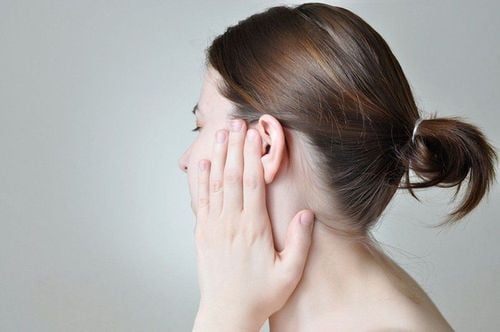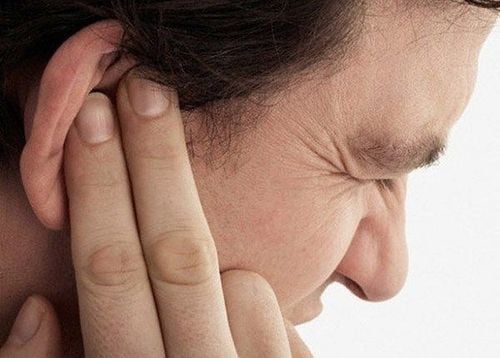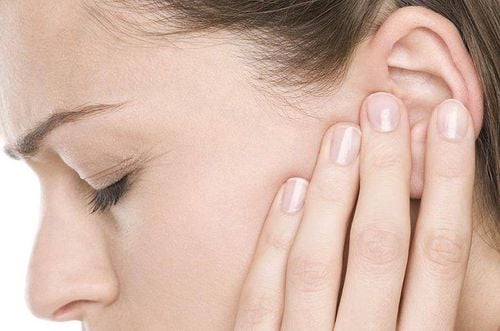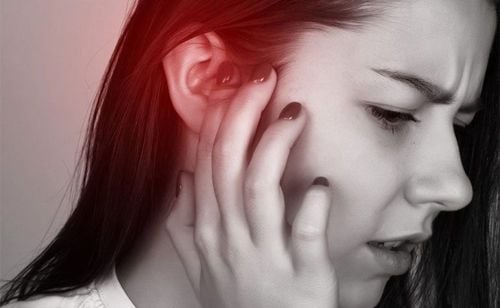This is an automatically translated article.
The article was professionally consulted by Specialist Doctor of Otolaryngology - Department of Medical Examination and Internal Medicine - Vinmec Ha Long International Hospital.
Acute otitis media in children, if not examined and treated promptly, can lead to dangerous complications. This is a common pathology in diseases where antibiotics and other drugs are indicated for symptomatic treatment. The use of drugs to treat acute otitis media also needs special attention, especially children.
1. Causes of acute otitis media in children
Ear problems are common in 2-year-olds or younger children because they tend to be exposed to a variety of disease-causing germs that persist in their surroundings before their immune system fully develops. enough to fight infection. In addition, the reason why children are susceptible to acute otitis media is that the eustachian tube is the tube connecting the middle ear to the pharynx, allowing local infectious substances to move into the cavity of the middle ear, when the function of the eustachian tube is impaired. Weakness leads to a change in pressure in the ear, causing fluid to accumulate in the middle ear, bulging the eardrum. Acute otitis media usually resolves on its own as the child's susceptibility to the disease decreases and the child's eustachian tube matures.
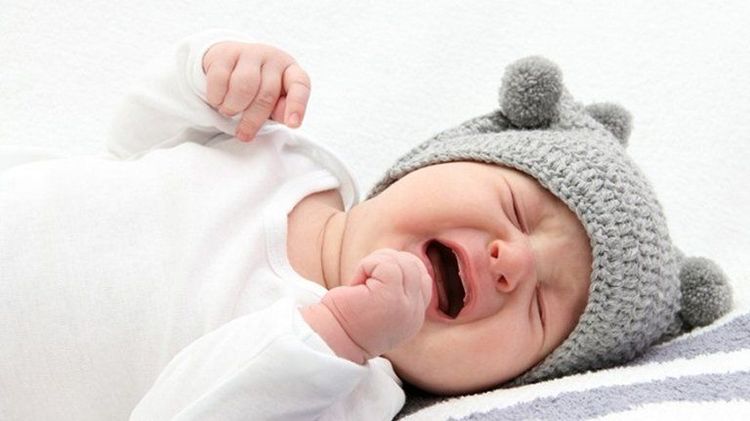
2. Symptoms of acute otitis media in children vary by age
In the neonatal period, children with otitis media often cry at night, have a fever (the fever may be higher than 39 degrees if the infection is severe), and stop feeding or accompanied by purulent ear discharge. Older children can learn to rub or tug at their ears with their hands. For children who can talk, they will say that their ears have pain in their ears, tinnitus and poor hearing.
Accordingly, parents need to take their children to the doctor as soon as they see the following symptoms: Ear discharge, swelling around the ear, headache, vomiting several times a day, mental disturbances, fever. above 39 degrees C but does not respond to fever-reducing drugs and warm compresses do not help, the child has dizziness or facial paralysis, hearing loss, crying a lot, and refusing to eat or drink.
Examination and treatment of acute otitis media at an early stage will help children improve symptoms as well as limit potentially dangerous complications.
3. Note when using drugs to treat acute otitis media in children
Medicines for acute otitis media should depend on the age of the child and the severity of the disease. For children under 6 months of age, the doctor needs to prescribe antibiotic treatment right away. For children aged 6 months to 2 years with acute bilateral otitis media also need antibiotic treatment as indicated. If the child has only one-sided inflammation and mild symptoms, it may be permissible to monitor for 48-72 hours.
For children over 2 years old, only use antibiotics when there are signs of toxicity, persistent ear pain symptoms lasting more than 48 hours, the child has a fever above 39 degrees Celsius in the previous 48 hours, the child has an infection in both ears or Ears with purulent discharge, not guaranteed to continue monitoring.
Choose antibiotics for acute otitis media in children as follows: Use amoxicillin if within the past 1 month the child has not taken any beta-lactam antibiotics, the child has no history of acute otitis media. recurrence and no associated purulent conjunctivitis. Amoxicillin in combination with clavulanic acid is indicated for children within the past 1 month who have used beta-lactam antibiotics, children with concomitant purulent conjunctivitis, children with a history of recurrent otitis media. For children who are allergic to penicillin, it may be possible to switch to cefdinir or cefpodoxime...
Small topical quinolones (ofloxacin, ciprofloxacin) may be as effective as oral administration in school. cases of otitis media with purulent discharge , cases of tympanic catheterization and cases of chronic otitis media . However, there are no studies on topical instillation of quinolones in children with acute otitis media or new tympanic membrane perforation.
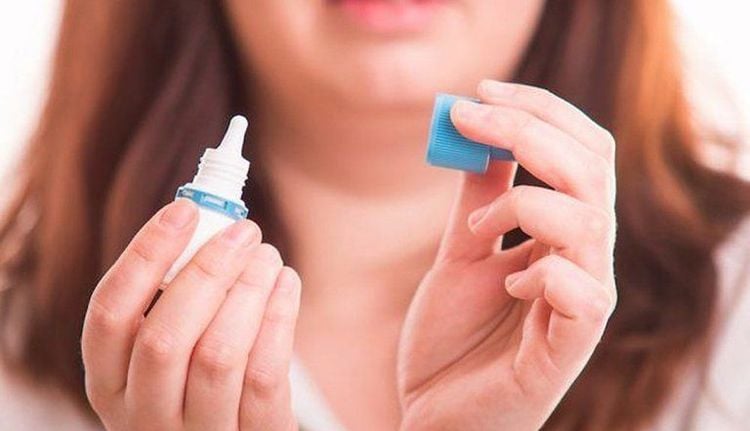
In case of failure (symptoms worsen or do not improve after 48-72 hours of antibiotics) due to inadequate or unreasonable treatment, antibiotics should be changed. For example, if you are taking high-dose amoxicillin but it is not effective, change to Amoxicillin in combination with high-dose clavulanic acid. If all else fails, Cephalosporins or Quinolones can be substituted...
4. Notes on drugs to treat symptoms
Pain relief: Use the anti-inflammatory pain reliever Ibuprofen or the pain reliever and fever reducer Acetaminophen (Paracetamol) to relieve pain in acute otitis media. Local anesthetics such as Benzocaine, Procaine, and Lidocaine can be substituted for children from 2 years of age and older as long as the child's eardrum has not been perforated. The topical application of these anesthetics is not indicated in children younger than 2 years of age because of the risk of MetHemoglobin-induced anemia.
Antihistamines: For children with acute otitis media accompanied by allergic rhinitis, the child may be considered to use nasal decongestants and antihistamines to relieve nasal symptoms. But it is still necessary to carefully consider, compare the benefits with the undesirable effects and the possibility of prolonging the time of middle ear drainage of antihistamines.
For children with acute otitis media without allergic rhinitis, decongestants and antihistamines should not be used in treatment. Because the use of decongestants and antihistamines alone or in combination will increase side effects and prolong middle ear discharge.
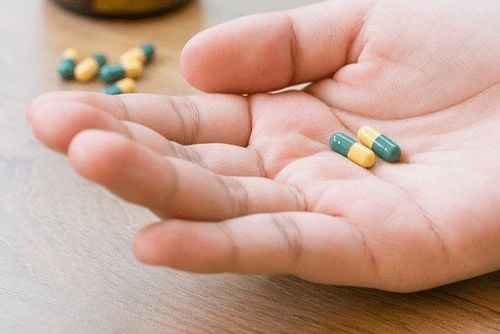
In the process of using the drug for children, parents need to monitor possible abnormalities such as: red rash, rash, nausea or vomiting..., these may be side effects not desired drug should be informed immediately to the doctor.
Currently, there are many parents who arbitrarily treat their children by using small hydrogen peroxide in their ears, sprinkling antibiotic powder in their children's ears... These methods are completely wrong. Small amounts of hydrogen peroxide can peel off the cuticle that protects the skin of the ear canal, slow down the wound healing process, and affect a child's hearing. Sprinkled with antibiotic powder in the child's ear will block the drainage, if the inflammatory fluid is not drained out, it will destroy the mastoid bone of the middle ear, causing mastoiditis, worse, causing intracranial complications..
Therefore, parents need to pay special attention: Absolutely do not arbitrarily buy drugs for self-treatment, do not use drugs according to the advice of others. The diagnosis and treatment must be carried out in specialized facilities to avoid serious complications that the drug can cause. When being prescribed medication by a doctor, parents need to follow the instructions on dosage and use of the drug, monitor if there are any abnormalities (drug side effects) that may occur, and notify the doctor in time. cope with.
Treatment of acute otitis media in children is often quite complicated and is easy to recur if the correct drug is not used and the treatment regimen is not followed. Therefore, parents must be very careful when using drugs to treat acute otitis media in children.
Pediatrics Department at Vinmec International General Hospital is the address for receiving and examining diseases that infants and young children are susceptible to: Fever, otitis media, bronchitis, pneumonia in children ,....With modern equipment, sterile space, minimizing the impact as well as the risk of disease spread along with modern examination procedures by specialized doctors in charge of treatment will provide optimal treatment results, limit recurrence.
To register for child care at Vinmec International General Hospital, you can contact Vinmec Health System nationwide or register online.





